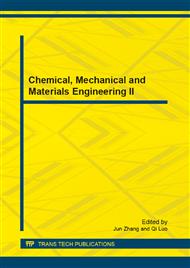p.308
p.312
p.316
p.321
p.326
p.331
p.337
p.343
p.351
The Study of Characteristic of Drivers Visual Attention Based on Driving Simulation Device
Abstract:
The number of traffic accidents keeps increasing with the development of traffic environments. There are a lot of accidents at twilight time. The cause of these accidents is depending upon the shift of drivers’ visual attention. The characteristic of visual attention in three-dimensional (3D) space were studied using a driving simulation device in order to test the effects of environment illuminance on the visual attention in this paper. In the experiments, two kind of illuminance conditions were used, brightness condition and twilight condition. In each experiment, there were three kinds of cue condition: valid, invalid and neutral condition. Observer moved forward at 0.44m/s speed, and illuminance were 480~680lx and 95~135lx in the experimental device inner. The subject’s task was to judge whether the target presented nearer than fixation point or further than it. Reaction times of the subjects on the cue were measured. As the results, it was claritied that (1) the visual adaptive ability of the subjects had a individual difference, (2) the shift of attention was faster from far to near than from near to far, (3) the reaction time was effected by the attention moved distance, (4) brightness has had very great influence upon the delay of reaction time of the drivers, and the delay of reaction time depended on the quantity of attention moved.
Info:
Periodical:
Pages:
326-330
Citation:
Online since:
May 2013
Authors:
Price:
Сopyright:
© 2013 Trans Tech Publications Ltd. All Rights Reserved
Share:
Citation:


